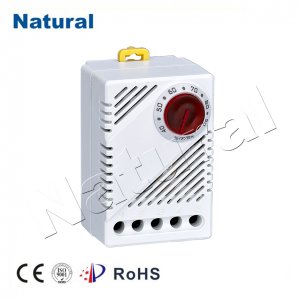文章:

Hygrostat Thermostats: The Key to Optimal Environmental Control In today’s rapidly advancing world, maintaining precise control over environmental conditions has become increasingly important. Whether you’re managing a commercial facility, a greenhouse, or simply looking to create a comfortable living space, having the right tools for environmental control is essential. One such tool gaining popularity is the hygrostat thermostat. In this article, we will explore what hygrostat thermostats are, how they work, and the benefits they offer. What is a Hygrostat Thermostat? A hygrostat thermostat is a specialized device designed to control both temperature and humidity levels within a given space. It combines the functions of a thermostat and a hygrometer, providing a comprehensive solution for maintaining optimal environmental conditions. The term “hygrostat” is derived from the words “humidity” and “thermostat,” reflecting its dual functionality. How Does a Hygrostat Thermostat Work? The fundamental operation of a hygrostat thermostat involves monitoring the temperature and humidity levels in an environment and making real-time adjustments to maintain predefined setpoints. Here’s a simplified overview of its operation: Sensors:Hygrostat thermostats are equipped with temperature and humidity sensors. These sensors continuously measure the current conditions in the controlled area. Setpoints:Users can input desired temperature and humidity setpoints into the hygrostat thermostat. These setpoints act as targets for the device to maintain. Control Logic:The hygrostat thermostat’s control logic processes the sensor data and compares it to the setpoints. If the temperature or humidity levels deviate from the desired values, the thermostat takes action. Actuators:The thermostat has built-in actuators that can control heating, cooling, humidification, or dehumidification equipment as needed. For instance, if the temperature is too high, it can activate an air conditioner to cool the space. Feedback Loop:The device continuously monitors the environment and makes adjustments as necessary, creating a feedback loop that ensures the desired conditions are maintained. Benefits of Hygrostat Thermostats Precision Control:Hygrostat thermostats offer precise control over both temperature and humidity, allowing users to create ideal conditions for various applications. This level of control is especially valuable in industries like agriculture, pharmaceuticals, and manufacturing. Energy Efficiency:By intelligently managing heating, cooling, and humidity control systems, hygrostat thermostats can significantly reduce energy consumption. This not only saves money but also reduces the environmental footprint. Preventing Mold and Condensation:Controlling humidity levels is crucial for preventing mold growth and condensation issues. Hygrostat thermostats excel in maintaining the right humidity levels to mitigate these problems. Enhanced Comfort:In residential settings, hygrostat thermostats can improve indoor comfort. They prevent the air from becoming too dry or too humid, creating a more pleasant living environment. Customization:Users can tailor the settings of hygrostat thermostats to meet their specific needs. Whether it’s a wine cellar, a server room, or a plant nursery, these devices can adapt to various environments. Remote Monitoring and Control:Many modern hygrostat thermostats offer remote monitoring and control through smartphone apps or web interfaces, allowing users to make adjustments from anywhere. In conclusion, hygrostat thermostats are valuable tools for maintaining optimal environmental conditions. Their ability to control both temperature and humidity levels with precision makes them indispensable in various industries and applications. Whether you’re seeking energy efficiency, mold prevention, or enhanced comfort, hygrostat thermostats offer a versatile solution to meet your needs. As technology continues to advance, these devices will likely play an increasingly important role in our quest for environmental control.